- Home
- Jane Austen
Persuasion (Barnes & Noble Classics Series) Page 3
Persuasion (Barnes & Noble Classics Series) Read online
Page 3
After producing unsold manuscripts of the first three novels, there was an apparent hiatus in Austen’s writing for ten years, for reasons that are not clear. This period coincides with her unwilling removal from her birthplace in Steventon to Bath at her father’s retirement, when she was twenty-five. She did not resume writing until after her father’s death, which necessitated the removal from Bath. From that point her brothers, including her wealthy brother Edward, contributed small amounts toward the upkeep of Jane and her sister and mother, settling them in the small but busy village of Chawton, where most of the village residents worked on Edward’s lands and estate. As a dependent, Jane had to live where others chose and travel when others pleased. In 1809, for example, when she wanted to leave her brother’s house during a visit, she had to endure the small humiliation of pleading with him to take her home or being forced to wait until it pleased him to transport her. During this period, in addition, it must have seemed that she was unlikely to either get married or get published.
The first publication was Sense and Sensibility, put out by Thomas Egerton in 1811 but produced at the expense of the author. The profits from the sales of Sense and Sensibility in 1813 gave Austen her first real taste of independence when she received £140 for it from her publisher. Since it was a small success, Egerton bought the copyright outright for Pride and Prejudice, which appeared in 1813. But though the latter went through three editions by 1817, Egerton insisted that Mansfield Park be produced at Austen’s expense. A better, more literary publisher, John Murray, was sought, and he was willing to publish Emma in 1815 for royalties.
Though her early biographers made much of her modesty and lack of ambition, Austen was in truth intensely interested in public reaction, so much so that she kept a notebook in which she copied down written reviews of her work, as well as private opinions, including the advice and preferences of her acquaintances. Austen was not a best-selling novelist, but she was an esteemed one. Though highly praised by Walter Scott and some others in her lifetime, her books did not achieve anywhere near the popularity of Scott, Dickens, or Thackeray in the nineteenth century, and the number of her reviewers was small. But Scott’s anonymous review of Emma (1816) had recast Jane Austen’s novels as examples of a new genre, the realist modern novel, favorably contrasting them with old-fashioned melodrama and romance, which taught “the youth of this realm ... the doctrine of selfishness” in pursuing imprudent love.
Early in 1816 Austen began to feel unwell, and though she was able to recover the copyright of Susan and revise the novel as Northanger Abbey, as well as finish Persuasion, she was ill for much of the last year of her life. “Sickness is a dangerous Indulgence at my time of Life,” she wrote in one of her last extant letters (March 23, 1817; see Jane Austen’s Letters). She died, appearing cheerful and busy to the end in her letters, in the midst of working on her unfinished novel Sanditon, while at Winchester, where she had been taken for treatment by a surgeon. Northanger Abbey and Persuasion were published posthumously by Murray together as a four-volume set, with a “Biographical Notice” appended by her brother Henry Austen. Interestingly, Persuasion is the only novel of Austen’s for which we have an original version altered for publication. Its two last chapters were extensively revised and expanded to amend the way in which the hero approaches the heroine to declare his love. Austen’s evident dissatisfaction with the original, more abbreviated conclusion of the novel belies Henry James’s dismissive view of her writing methods as merely “instinctive.”
Soon after her death, Austen’s work entered the debate about what the novel ought to do: Should it imitate social reality, improve morals and convey high thoughts of the philosophical mind, or represent the claims of passion? One contemporary critic noted that just as novels are rarely “improving” enough for readers, the moral of Persuasion, that “young people should always marry according to their own inclinations and upon their own judgement,” was indicative of a low moral tendency in contemporary novel-writing. Sentimental fiction as a woman’s genre was supposed to confine passion within the bounds of strict morality.
Later in the century Charlotte Brontë, like Wordsworth before her, found Austen “shrewd and observant” rather than “profound,” and remarked that “the Passions are perfectly unknown to her.” Brontë, having been accused of immoralism herself, does not ask for moral function, but for passion and philosophy. She describes Austen’s work as “a carefully fenced, highly cultivated garden, with neat borders and delicate flowers; but no glance of a bright, vivid physiognomy, no open country, no fresh air, no blue hill, no bonny beck. I should hardly like to live with her ladies and gentlemen, in their elegant but confined houses” (letter of January 12, 1848; see Wise and Syming ton, eds., The Brontes: Their Friendships, Lives, and Correspondence). She accuses Austen of unfemininity: ‘Jane Austen was a complete and most sensible lady, but a very incomplete, and rather insensible (not senseless) woman” (letter of April 12, 1850). But the influential critic George Henry Lewes admired her realism, which he called “daring from its humble truthfulness,” and an American critic writing in 1849 cited her as a ”model of perfection in a new and very difficult species of writing ... [with] no surprising adventures, ... no artfully involved plot, no scenes deeply pathetic or extravagantly humorous.” By the end of the century Austen was identified with Scott’s view of her, as embodying a realism that copies nature and imitates the commonplace yet imparts moral wisdom, “universal truths,” and is instructive where romance inflames.
Persuasion is forever being called “mature,” implying that Jane Austen had at last arrived at some culminating wisdom in her lifelong struggle for it. It is also frequently described as “autumnal,” emphasizing its status as her last completed work before dying. As far back as 1862, a reviewer labeled it her “tender and sad” novel. In fact, Persuasion begins with loss, both personal and economic, and slowly reverses the trajectory.
Though Persuasion, like other Jane Austen novels, is about the maturing through trial of a young woman, the novel does not begin with its central character, Anne Elliot. Instead the first pages are devoted to her father and his obsessive vanity about his lineage as baronet, from which follows his contempt for those he considers beneath him. Like many of Austen’s fictional fathers, Sir Walter is detached, ineffectual, and self-serving (the good fathers in Austen’s novels tend to die before the novel opens, as in Sense and Sensibility), but unlike Elizabeth Bennet’s father in Pride and Prejudice, he is also shockingly stupid. He has one trait uniquely his own in contrast to Austen’s other clueless patriarchs: He is said to value his beauty only slightly less than he values his social rank. Austen slyly classifies Sir Walter as feminine in his erotics of self: “Few women could think more of their personal appearance than he did” (p. 4). Personal vanity is linked to a kind of romantic love for himself that precludes his feeling much affection for his family: “He considered the blessing of beauty as inferior only to the blessing of a baronetcy; and the Sir Walter Elliot, who united these gifts, was the constant object of his warmest respect and devotion” (p. 4). Here, as elsewhere in the Austen canon, the egocentric ity of personal display is tied to the falseness of social place as a marker of distinction. The presence of vanity strongly indicates here that real worth is inner value, demonstrated by “true” taste that is modest, clean, and neat, not by outer symbolic displays or performance.
In Pride and Prejudice and Sense and Sensibility, the heroines have fond sisters who are their complements and provide the intimate support the heroine requires in order to speak her mind within the narrative. Anne Elliot is not an only child, but her sisters are monsters of selfishness and either ignore her shamefully or use her shamelessly. Before the end of the first chapter, it is established that the heroine is both privileged and very little valued or recognized: a “nobody,” “only Anne” within her family. Her godmother, Lady Russell, a close friend of her dead mother and clearly a mother-substitute, is alone capable of understanding her wort
h, but she is hardly a fairy godmother to Anne’s Cinderella, as we soon find out.
The narrative gets underway at the point (the end of the very first chapter) when we learn that the high ranking of this family on the social hierarchy does not guarantee the stability of their economic value; the finances of the estate are in peril, debt is accumulating, and the family must “retrench”—that is, live at less expense. This instability of economic privilege conflicts with the belief that recognition of social privilege is universal, which is both the essence of Sir Walter’s being and at the core of traditional British society. Sir Walter reacts with a foolish refusal to economize, while Anne is shown not only to be wise and prudent beyond her years but also strong and humble in her willingness to climb slightly down the economic ladder with dignity. The manor house that is the symbol of the estate, the source of their family wealth and privilege, must be “let”—they must separate from it but not entirely give it up. At this point the heroine (along with her family) enters a kind of limbo in which she is a wanderer from the ancestral estate, privileged by birth but with a social and economic identity whose worth is uncertain and in flux. All she has is her value in the marriage market.
In chapter 3, the theme of social mobility is introduced: Sir Walter objects to letting the house to an admiral because the navy offends his two most valued traits: privilege ranked by birth, and male beauty. The navy is “the means of bringing persons of obscure birth into undue distinction, and raising men to honours which their fathers and grandfathers never dreamt of,” forcing men to behave as social equals to those “whose father, his father might have disdained to speak to” (p. 19). This is the privileged perspective on meritocracy, of course. Austen makes fun of its snobbish presumptuousness of superiority by birth in immediately linking it with Sir Walter’s fear and horror of the unattractive: He assumes that the weathered appearance of a naval man must be an “object of disgust” to all. Sir Walter’s extreme obsession with male youth and beauty satirizes a worldview in which social worth is externalized by attractive appearance, so that nature and social life are assumed to work in tandem.
We are therefore well into the novel before we learn that Anne has “low spirits” because she has had an unhappy parting seven years before from a man she loved, Captain Wentworth of the navy, brother-in-law to the Crofts, who are about to rent the ancestral hall of the family. Their early engagement is treated with the author’s irony, but a fondly indulgent one: “Half the sum of attraction, on either side, might have been enough, for he had nothing to do, and she had hardly any body to love”(p. 25). Nevertheless, their proposed alliance is the beginning of the Trouble around which all narratives are said to center. The marriage of Anne and Wentworth implies a rejection of the traditionalist principles of stable and universal hierarchy, since Wentworth is, in that perspective, “a young man, who had nothing but himself to recommend him, and no hopes of attaining affluence, but in the chances of a most uncertain profession, and no connexions to secure even his farther rise in that profession” (p. 26). Wentworth is the upwardly mobile, talented young man of the nineteenth century, “full of life and ardour”(p. 26). He has only his own resources rather than privilege to fall back on, yet he is confident and proud. The contrasting terms that describe him illuminate the tensions between two worldviews: what Anne Elliot in her youth sees as “brilliant, headstrong,” fearless, warm, and witty, the traditional Lady Russell sees as “dangerous” and imprudent. Though Anne rebels in feeling against an “over-anxious caution which seems to insult exertion and distrust Providence”(p. 29), she obeys out of deference to Lady Russell’s superior wisdom and authority, breaking the engagement.
In doing so Anne “relies” on Lady Russell as a mother—one who combines wisdom with “tenderness”—and is “persuaded” that the alliance is wrong. Yet Lady Russell is immediately shown up as narrow and self-interested when she wishes Anne would marry the mediocre Charles Musgrove because of his “landed property,” “general importance,” “good character and appearance,” and (apparently not least important) his location “near herself.” She displays a shrewd awareness of the marriage market: “However Lady Russell might have asked yet for something more, while Anne was nineteen, she would have rejoiced to see her at twenty-two” so respectably situated(p. 27). Anne’s feelings count for little here; whereas Jane Eyre tells her own story and finds her voice in narrating it to us, we are told “How eloquent could Anne Elliot have been,—how eloquent, at least, were her wishes”(p. 29). So far the theme appears to be “prudence” (privilege, disguised as wisdom, going by the rules) versus “romance,” in which prudence comes up against an egalitarian meritocracy, identified with “romance” and its trans-formative capacities and possibilities: “She had been forced into prudence in her youth, she learned romance as she grew older—the natural sequel of an unnatural beginning”(p. 29). This well describes the way in which Austen reverses the usual narrative association of youth with romance and feeling and age with reason and wisdom. The story looked at in this way is one of romantic renewal, a kind of Winter’s Tale.
The heroine’s traditional solution to this classic problem of the novel, the conflict between categories marked “feeling” and “reason,” or “individual” and “community,” is love and marriage. Through the social legitimation of her personal feeling, her personal worth is recognized, her social status as wife established, and her economic future as middle-class or better secured. Lady Russell is the temporary impediment in that she has a “value for rank and consequence” that “blinds her”—in this trait she is partly aligned with the social traditionalists, though also partly with the new ranking by feeling, since she alone is capable of appreciating Anne’s worth. Though Lady Russell is not entirely condemned—she is said to have a “more tempered and pardonable pride”(p. 25)—her decisive victory over the lovers at this point groups her with those who defend social hierarchies as fixed and given, so that she stands in need of correction by Anne.
The title of the novel, Persuasion, points to the causes and consequences of this momentous decision in Anne’s life. Feeling and reason are commonly categorized as inimical to each other in regard to the behaviors that determine lives, but here the treatment of persuasion is not confined to the reasonability of the external world versus the anarchy of internal selfish drives. On the contrary, the exploration of the internal world of the mind that constitutes much of this novel is given over to a remarkable literary description of what we would now call the process of rationalization and its consequence, the inability to trust to reason: “How quick come the reasons for approving what we like!” remarks the narrator (p. 15). Like Sir Walter and his inability to see Mrs. Clay’s freckles, we all see only what we want to; we are all of us blinded by desire, as much as Lady Russell is blinded by rational pride. Even thoughtful Anne can convince herself that giving up the engagement is for Captain Wentworth’s own good. As in the psychological novels of George Eliot and Henry James, or the psychoanalytic theory of Freud, emotion dominates over wisdom and clear thinking. This unreliability gives much finer shadings to the idea of “persuasion” than the plot at first seems to suggest.
When Anne stays home to nurse her nephew, she is selfless in volunteering, but her goodness is admixed with the unad mitted desire to avoid an awkward first meeting with her former lover. In this she is not as unlike her sister Mary and brother-in-law Charles, who are more obviously self-centered, as she at first appears. All are united in their willingness to be persuaded by what they want to think. In this scene in chapter 10 the free indirect discourse that reveals Anne’s thoughts melds with the author’s in forming a standard for valuing behavior. The implication is that there is a universal and stable standard available, but it is rendered unstable because of feeling. Though Anne knows this about others as a silent watcher and “longs” to represent the truth to them all, we soon see that she too rationalizes her own behavior: “From some feelings of interest and curiosity, she fancied now that
it was too late to retract” when she realizes her former lover is going to accompany her party on a walk (p. 79).
Jane Austen’s characteristic style has an interesting relation to the ambiguity surrounding thinking and feeling. Her famous tongue-in-cheek satire or irony consists in a radical disconnection between what a character says and means, as when Anne, nervous about meeting her former lover’s relatives, now tenants at her own home, “found it most natural to be sorry that she had missed the opportunity of seeing them”(p. 31) or between the conventional and real meanings of a narrative description, as when Anne’s sister Mary and her husband are said to be “always perfectly agreed in the want of more money” (p. 42). Mary does unknowingly what the narrator does knowingly. She is deficient in “understanding” and “temper,” and has the “Elliot self-importance” and “no resources for solitude”(p. 36); but she says “I made the best of it; I always do” about supposedly feeling ill, when she so clearly does the opposite. Characters correct each other’s view while the narrator corrects our view of all of them, forcefully demonstrating a radical instability of perspective quite unlike the harmonized world associated with Austen’s work.
Mary’s character is based on the high comedy of rationalization, in which we are in on the joke of her selfishness. But Mary’s function is not simply comic; she shows off Anne’s temper, her restraint, patience, gentleness, moderation, self-suppression, even what Jane Austen calls her “forced cheerfulness.” In her extreme obedience to her own egotism, Mary belongs to those who are “romantic” in their suffering—that is, self-indulgently dramatizing and thinking highly of the importance of their own feelings. In contrast with her two selfish sisters, Anne is praised for her “elegant and cultivated mind” (my italics; p. 39). Anne’s visit to Uppercross, home of Mary’s in-laws, the Musgroves, is a corrective to the Elliot pride, a lesson to Anne “in the art of knowing our own nothingness beyond our own circle”(p. 40). Yet all those at Uppercross are also in the “self-delusion” of egoism, barely listening to any concerns but their own. Where the Elliots are cold and unfeeling, the Musgroves are feeling but dim.

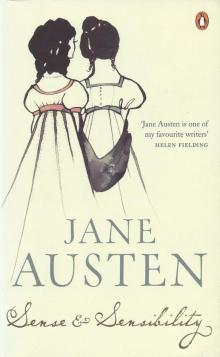 Sense and Sensibility
Sense and Sensibility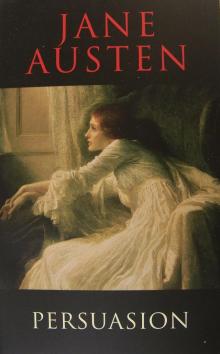 Persuasion
Persuasion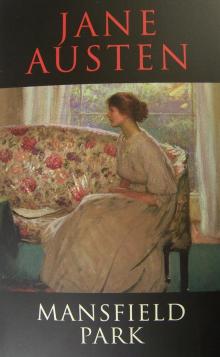 Mansfield Park
Mansfield Park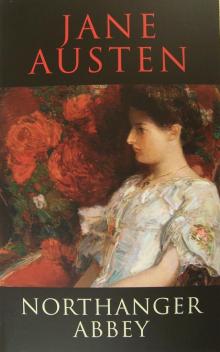 Northanger Abbey
Northanger Abbey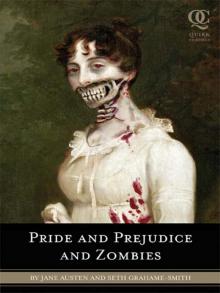 Pride and Prejudice and Zombies
Pride and Prejudice and Zombies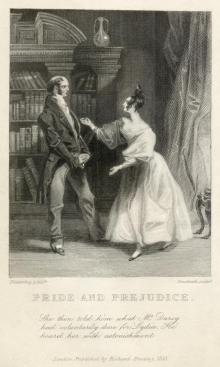 Pride and Prejudice
Pride and Prejudice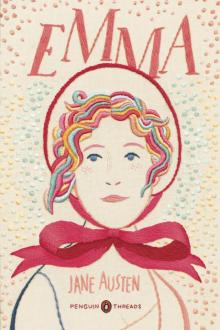 Emma
Emma Persuasion (Dover Thrift Editions)
Persuasion (Dover Thrift Editions)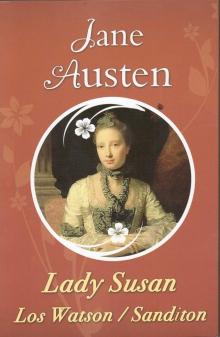 Lady Susan
Lady Susan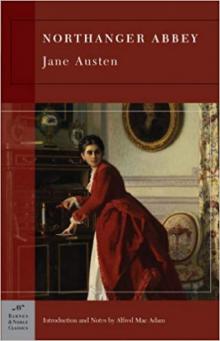 Northanger Abbey (Barnes & Noble Classics)
Northanger Abbey (Barnes & Noble Classics)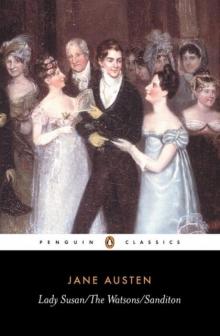 Lady Susan, the Watsons, Sanditon
Lady Susan, the Watsons, Sanditon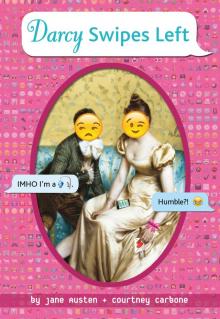 Darcy Swipes Left
Darcy Swipes Left Persuasion: Jane Austen (The Complete Works)
Persuasion: Jane Austen (The Complete Works)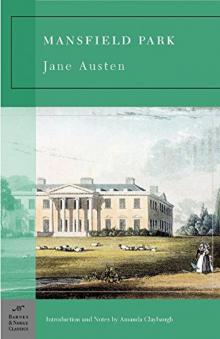 Mansfield Park (Barnes & Noble Classics Series)
Mansfield Park (Barnes & Noble Classics Series)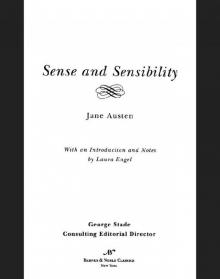 Sense and Sensibility (Barnes & Noble Classics Series)
Sense and Sensibility (Barnes & Noble Classics Series) The Annotated Sense and Sensibility
The Annotated Sense and Sensibility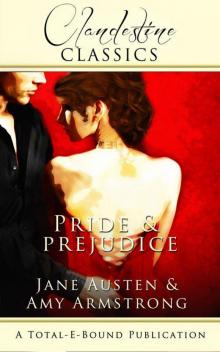 Pride and Prejudice (Clandestine Classics)
Pride and Prejudice (Clandestine Classics)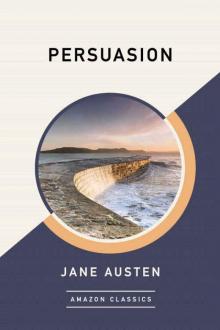 Persuasion (AmazonClassics Edition)
Persuasion (AmazonClassics Edition)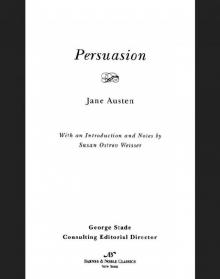 Persuasion (Barnes & Noble Classics Series)
Persuasion (Barnes & Noble Classics Series)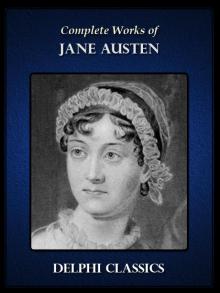 Complete Works of Jane Austen
Complete Works of Jane Austen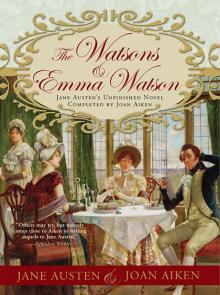 The Watsons and Emma Watson
The Watsons and Emma Watson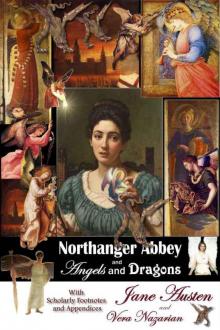 Northanger Abbey and Angels and Dragons
Northanger Abbey and Angels and Dragons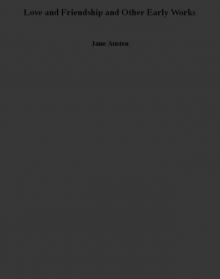 Love and Friendship and Other Early Works
Love and Friendship and Other Early Works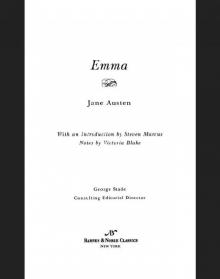 Emma (Barnes & Noble Classics Series)
Emma (Barnes & Noble Classics Series)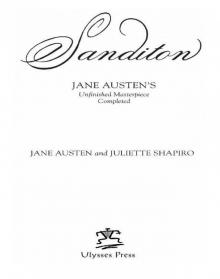 Sanditon
Sanditon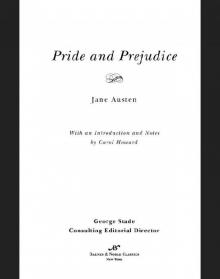 Pride and Prejudice (Barnes & Noble Classics Series)
Pride and Prejudice (Barnes & Noble Classics Series)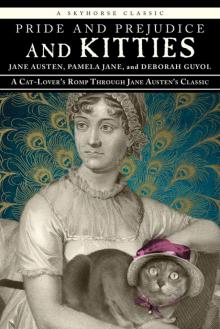 Pride and Prejudice and Kitties
Pride and Prejudice and Kitties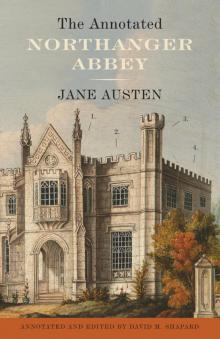 The Annotated Northanger Abbey
The Annotated Northanger Abbey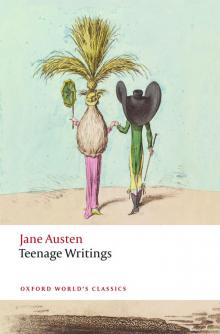 Oxford World’s Classics
Oxford World’s Classics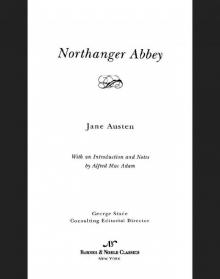 Northanger Abbey (Barnes & Noble Classics Series)
Northanger Abbey (Barnes & Noble Classics Series)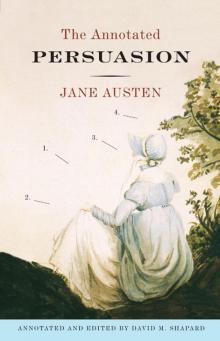 The Annotated Persuasion
The Annotated Persuasion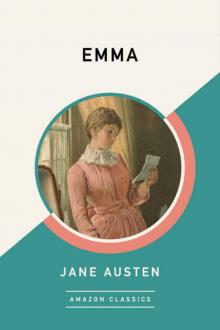 Emma (AmazonClassics Edition)
Emma (AmazonClassics Edition)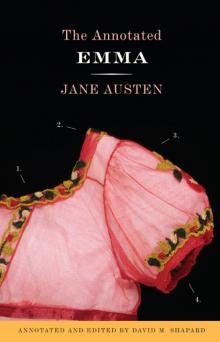 The Annotated Emma
The Annotated Emma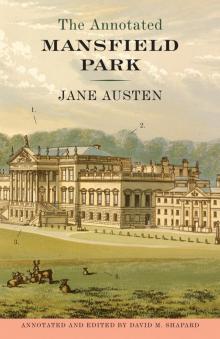 The Annotated Mansfield Park
The Annotated Mansfield Park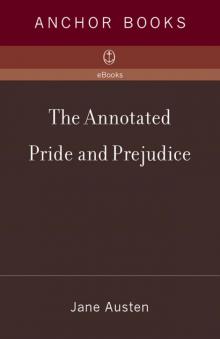 The Annotated Pride and Prejudice
The Annotated Pride and Prejudice